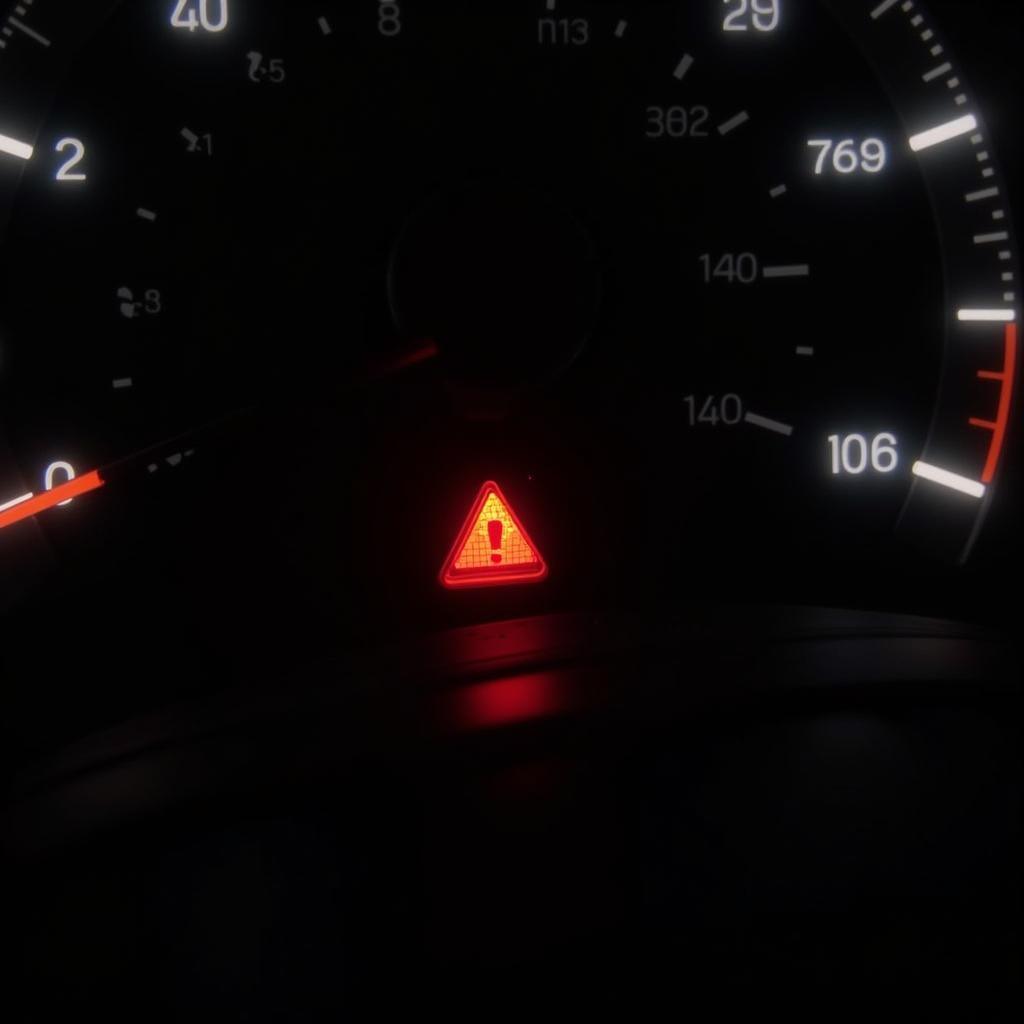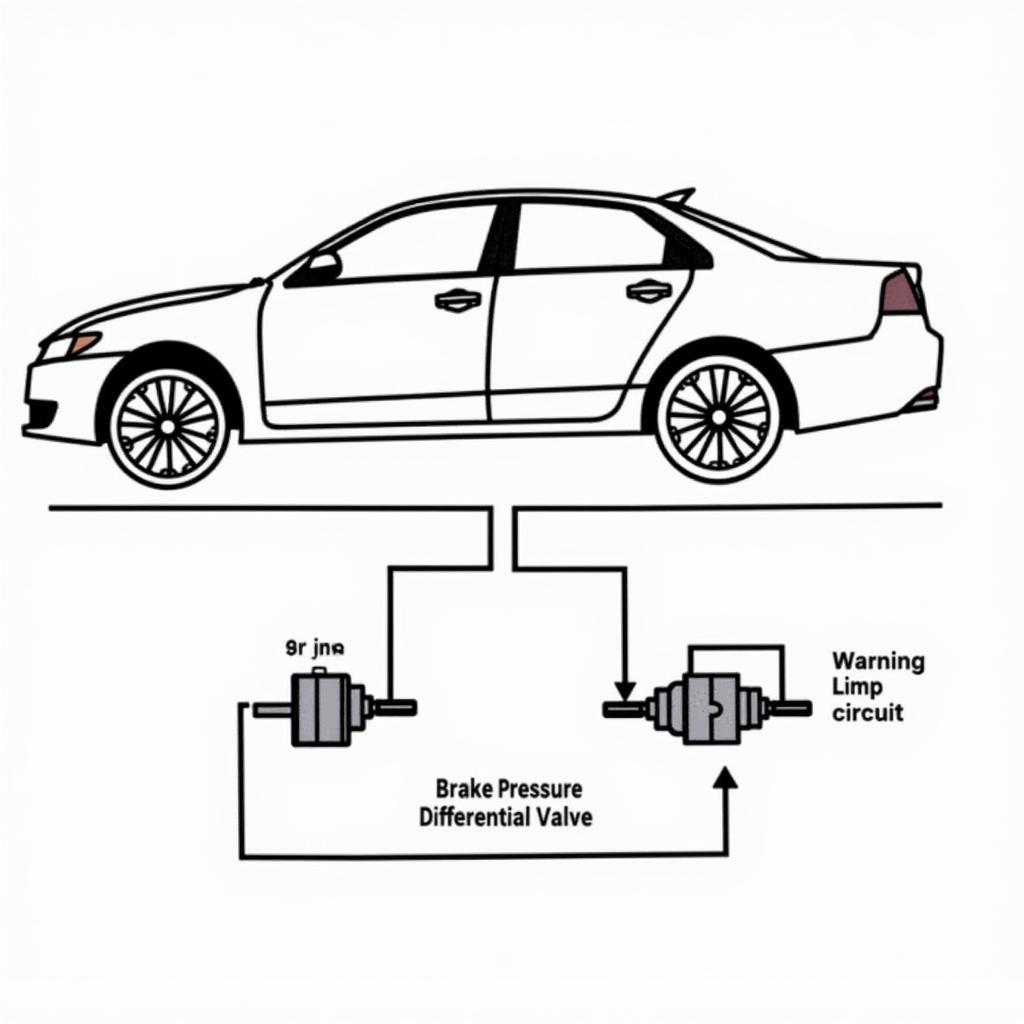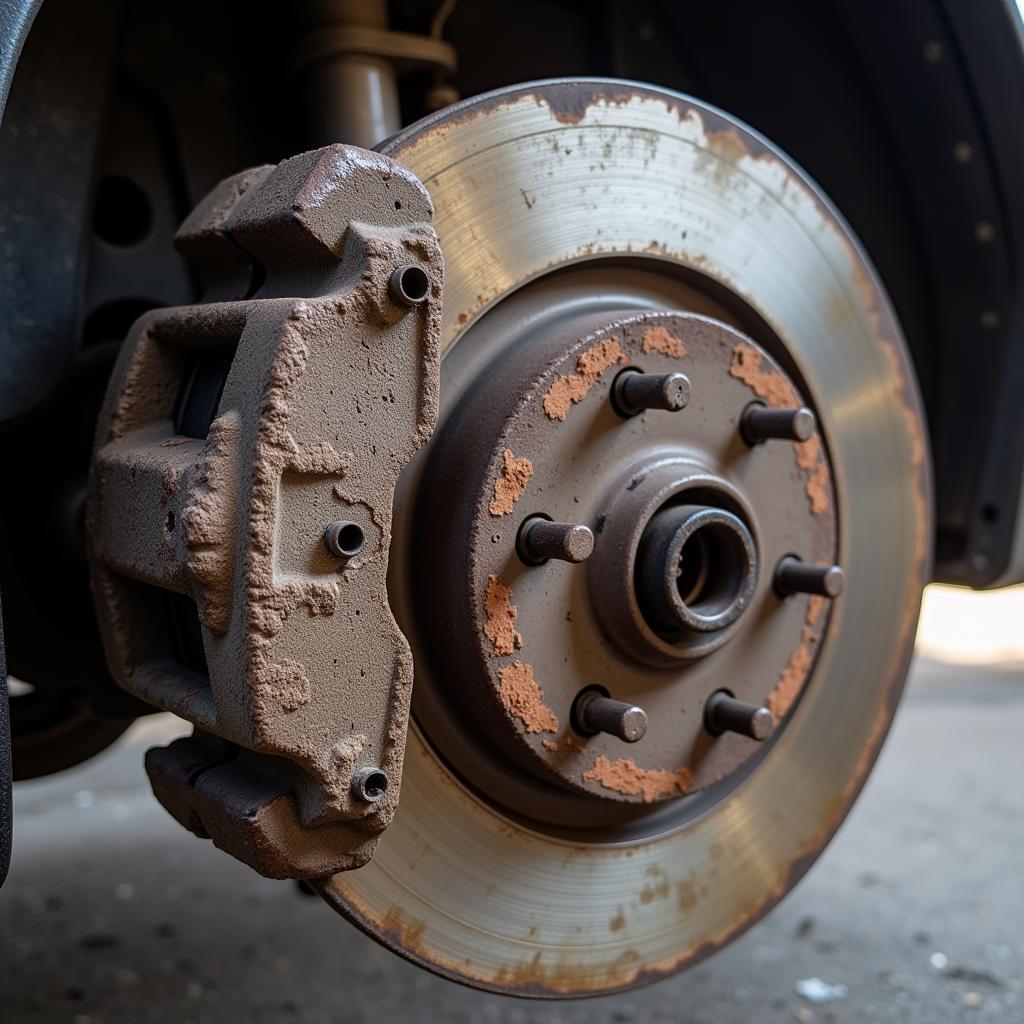One of the most unsettling sights for any driver is the illumination of the brake warning lamp on your dashboard. This typically signals a problem within your braking system, demanding immediate attention. While various components can trigger this warning, one crucial culprit often overlooked is a faulty valve. But what valve illuminates the brake warning lamp?
 Brake Warning Light on Dashboard
Brake Warning Light on Dashboard
Understanding the Brake Warning Light
Before delving into the specific valve responsible for triggering the brake warning light, it’s essential to understand the function of this critical warning system. The brake warning light serves as your car’s way of communicating a potential issue within the braking system. When illuminated, it could indicate several problems, ranging from low brake fluid levels to a malfunctioning component.
The Culprit: The Brake Pressure Differential Valve
Among the array of valves within your car’s braking system, the brake pressure differential valve holds the key to illuminating the brake warning lamp. This valve, also known as the pressure differential switch, plays a crucial role in maintaining balanced braking force between the front and rear wheels. Its primary function is to detect any imbalance in hydraulic pressure between the two brake circuits.
How the Brake Pressure Differential Valve Works
Your car’s hydraulic braking system is split into two circuits, each controlling the brakes on one side of the vehicle. This dual-circuit design ensures that if one circuit fails, you still have braking power on the other side, preventing complete brake failure.
The brake pressure differential valve sits between these two circuits, constantly monitoring the pressure within each. Under normal braking conditions, both circuits operate at equal pressure. However, if a leak or failure occurs in one circuit, the pressure differential valve detects the imbalance. This triggers the valve to activate, illuminating the brake warning lamp on your dashboard.
 Brake Pressure Differential Valve Diagram
Brake Pressure Differential Valve Diagram
“Think of the brake pressure differential valve as a vigilant watchdog,” explains John Miller, a seasoned automotive engineer with over 20 years of experience. “It constantly monitors the pressure balance in your braking system, barking (illuminating the warning lamp) at the first sign of trouble.”
Beyond the Warning Light: Symptoms of a Faulty Valve
While the illuminated brake warning light is the most apparent sign of a potential issue with the brake pressure differential valve, other symptoms might surface, including:
- Uneven braking: You might experience your car pulling to one side when braking, indicating an imbalance in braking force.
- Spongy brake pedal: A faulty valve can disrupt hydraulic pressure, leading to a soft or spongy brake pedal feel.
- Leaking brake fluid: Check for any signs of brake fluid leaks near the master cylinder or beneath the vehicle, which can trigger the pressure differential valve.
Addressing the Issue
If you suspect a problem with your brake pressure differential valve, it’s crucial to address the issue immediately. Driving with a faulty valve compromises your safety and can lead to complete brake failure.
 Mechanic Inspecting Brake System
Mechanic Inspecting Brake System
Here’s what you should do:
- Check brake fluid levels: Ensure the brake fluid reservoir is full. Low fluid levels can trigger the warning light and indicate a leak in the system.
- Inspect for leaks: Visually examine the brake lines, hoses, and connections near the master cylinder and beneath the vehicle for any signs of leaks.
- Seek professional help: If you detect low fluid levels, leaks, or experience any of the symptoms mentioned above, take your car to a qualified mechanic immediately for diagnosis and repair.
Conclusion
The brake pressure differential valve plays a critical role in ensuring your vehicle’s braking system operates safely and effectively. When this valve detects an imbalance in your brake circuits, it illuminates the brake warning lamp, alerting you to a potential problem. Never ignore this warning, as it signifies a potential compromise in your car’s braking ability. Promptly addressing the issue ensures your safety and prevents further damage to your braking system.

